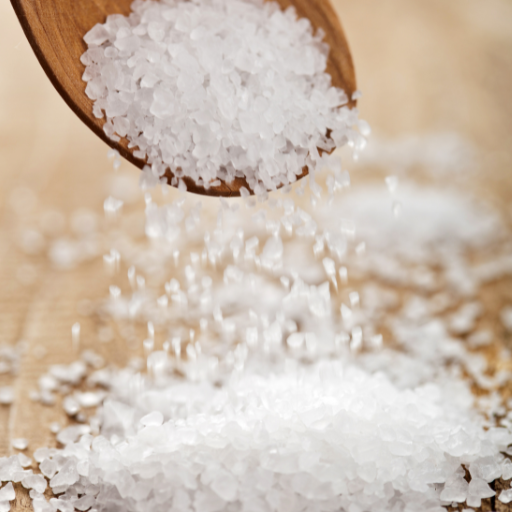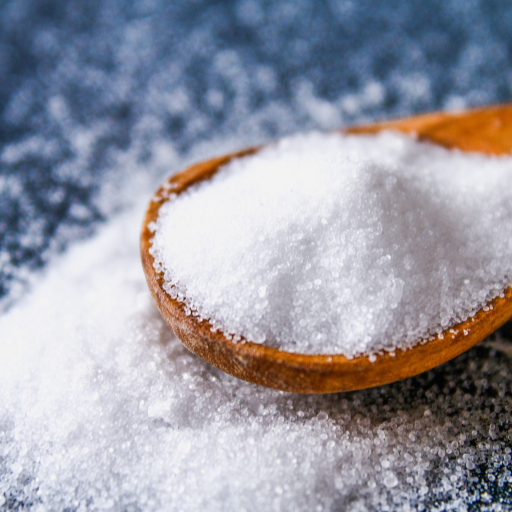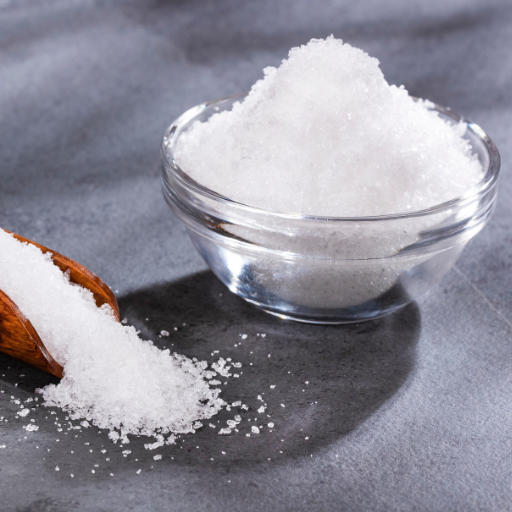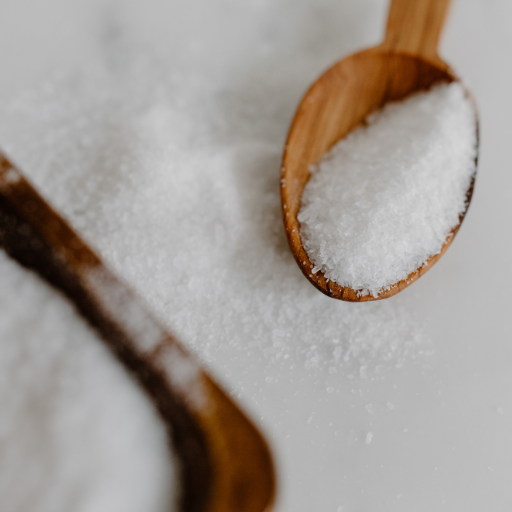One of the many uses of Epsom salt, which is chemically called magnesium sulfate (MgSO₄), is for gardening and agriculture. This mineral compound contains necessary nutrients for plant growth and development. This article aims at giving an in-depth guide on how to use Epsom salt effectively in your gardening to maximize the health and productivity of plants. Some of its advantages, right methods of application, possible dangers and plants’ kinds that most likely respond well to it will be analyzed here. Gardeners who understand the science involved with this mineral will improve their soil conditions and cure magnesium deficiencies, thus ensuring strong plants that can withstand diseases and other adverse conditions.
Benefits of Epsom Salt for Plants

Epsom salt is an excellent source of magnesium and sulfur, two important elements for various physiological reasons in plants. Magnesium is a central part of chlorophyll necessary for photosynthesis, while sulfur is key to protein formation and enzyme functioning. When applied to plants Epsom salt can lead to greener leaves, better nutrient uptake and seed germination; it also repels pests like slugs and voles, as well as correcting tomato or pepper imbalance resulting in blossom end rot. Consistent use of Epsom salt increases the plant’s overall health, vigor and productivity.
How Does Epsom Salt Help Plants Grow?
In this case every growing plant needs nutrients among them are those that come from Epsom salts such as magnesium and sulphur since they play a significant role in their life processes. Magnesium (Mg) is required by plants for the production of chlorophyll which enables photosynthesis in plants thus aiding conversion of light into chemical energy. Sufficient levels of chlorophyll ensures healthy growth, vigorous, greenness in leaves. Additionally, sulfur (S), as an element forms amino acids proteins and enzymes essential for plant metabolism.
By absorbing these nutrients from the Epsom salts, it will improve the uptake of other macro/micro nutrients by promoting root development and function, thereby improving a crop’s NPK–drawing capabilities. An instance can be given: when there is a lack of Mg phosphorus mobility will get hindered within soil, thus limiting energy transfer processes and storage within plant cells.
What Nutrients Does Epsom Salt Provide?
Essentially Epson salt contains two major nutrients: magnesium (Mg) and sulfur (S). An important 10% mass fraction constituent making up roughly weight percent composition by weight of Epson salt has been identified as Mg which performs many vital functions including chlorophyll synthesis necessary for photosynthesis C55H72MgN4O5. It is also involved in growth activation of many plant enzymes. Meanwhile around 13% mass fraction constituent referred to as sulfur helps in amino acid formation such as cysteine (C3H7NO2S) and methionine (C5H11NO2S), promoting enzyme activity and metabolism of nutrients in plants. The combination of these two can unlock the potential of a plant to efficiently uptake other important nutrients, thus accelerating it’s growth.
Why Is Magnesium Important for Plants?
Magnesium is crucial in plants because it forms part of chlorophyll molecules, which are essential for photosynthesis. Magnesium appears at the center of chlorophyll (C55H72MgN4O5), which allows plants to convert light into chemical energy during photosynthesis. This process assists glucose synthesis and other carbohydrates, which provide the primary energy source required for plant development and growth.
Additionally, magnesium is a cofactor for various enzymes, such as DNA/RNA synthesis, ATP production, and carbohydrate metabolism. Mg2+ ions increase stability of ribosomes that participate in protein formation processes. In addition, through improving phosphorus mobile with the plant will assist ATP (adenosine triphosphate) mediated energy transfer which is critical within a crop system.”
Choosing the Right Plants for Epsom Salt

Not every plant responds similarly to Epsom salt, hence necessitating selection of appropriate varieties to maximize benefits. Some plants especially require magnesium and sulfur; therefore, epsom salt can be beneficial. These include roses, which usually show increased growth and flower production; tomatoes and peppers, where additional magnesium prevents blossom end rot; and houseplants that may experience nutrient deficiencies while potted. Furthermore, leafy green vegetables like spinach and kale grow better when Epsom salt is supplemented, thereby improving overall plant health by facilitating optimal photosynthesis, resulting in vigorous growth. However, it is important to follow the application rates recommended so as to avoid over-fertilizing because it can be detrimental to the health of a plant.
Which Plants Does Epsom Salt Affect Most?
Roses, tomatoes, and peppers are some of the major beneficiaries of applying Epsom salts. By increasing magnesium and sulphur content in their plants through various sources these crops enhance growth, productivity and general well being
- Roses: Deeper green leaves as well as stronger blooms due to increased chlorophyll production brought about by Epsom Salt. It is recommended that a tablespoonful per gallon water for foliar spray or around the stem base every two weeks.
- Tomatoes: Magnesium from Epsom salt can help prevent blossom end rot which occurs because there is not enough calcium available that has been indirectly related with lack of magnesium in most cases.Even fruit set will be improved significantly with an addition of 1 tablespoon per foot height plant mixed up with soil or foliar sprayed regularly.
- Peppers: Like tomatoes, peppers benefit from enhanced nutrient uptake, resulting in healthier, more productive plants if supplied with Epsom salt. Adding 1 tablespoon mixed into the soil per foot height of the crop or using it as a foliar spray helps alleviate common problems associated with malnutrition while enhancing total crop vigor.
Can All Plants Use Epsom Salt?
Even though many plants can gain from the use of epsom salt, some plant species do not require them. The effectiveness of Epsom salts depends on nutrient requirements and soil nutrient status. Such crops as beans, legumes, and leafy vegetables, among others, usually extract enough magnesium and sulfur from the soil; therefore, extra application might lead to toxicity or imbalance of nutrients. In this regard, a soil test is necessary to establish if Epsom salt is needed or how it will help under specific conditions in relation to each plant.
Signs Your Plant Needs Epsom Salt
Magnesium deficiency shows specific physiological symptoms in plants. One such sign is interveinal chlorosis, where veins remain green while areas between turn yellow, indicating that magnesium shortage makes photosynthesis difficult for the crop concerned. Other symptoms include slow growth and poor fruiting, particularly observed in fruit-bearing crops like tomatoes and peppers. Because of these health problems, leaves may die back or curl, thereby contributing to the deteriorating condition of the whole plant. It is better to check magnesium content using soil tests before applying Epsom salt since its overuse may have side effects such as nutrient imbalance and building up of toxins in soils.
Proper Dosage for Plants

Different plants and growth stages would mean different dosages of Epsom salt. To apply for general use, dissolve one to two tablespoons of Epsom salt in a gallon of water and spray it on the leaves or pour it into the soil every 2-4 weeks. For houseplants, make sure that you add two tbsps. per gallon of water at least once in 30 days. Also, tomatoes and peppers can be applied more often, especially when they start bearing fruits; however, it is important to watch its response to adjust accordingly. It is necessary to adhere to these guidelines so as to avoid nutrient imbalances and ensure plants’ health.
Is There a Risk Of Overdosing?
Yes indeed there are risks of overdosing with Epsom salt that may affect plant health negatively. On the other hand applying excessive amount of Epsom salts which contains magnesium sulfate can result in buildup up magnesium in the soil thereby displacing other highly essential nutrients such as calcium and potassium. This may, therefore, impair growth and lead to nutritional deficiencies. Therefore, by always following recommended dosages for prevention of over-dose and keeping track of plants’ reaction towards them can help a lot. In particular, use 1 teaspoonful per gallon monthly for indoor plants while 1 tablespoon per gallon biweekly will serve the purpose for outdoor ones only. Regular soil testing is important so as to have optimal range levels for magne-sium (50-100 ppm). If soil tests reveal high levels of magnesium, reduce or stop using Epsom salt while leach-ing salts out with water, among other ways, might be considered . Properly drained soils must keep enough air movement, thus inhibiting salt accumulation hazards.
Applying Epsom Salt Solution
Before applying Epsom salt to the soil, ensure that it is thoroughly watered, as application of this chemical on dry soils can cause injury to the plant tissue. For general maintenance, dilute 1 tablespoon of Epsom salt per gallon of water for outdoor plants and apply it every two weeks. For specific deficiencies, a more concentrated solution of 1 cup per 100 square feet may be applied. Instead of spraying the leaves, soak the soil surrounding the base of a plant when adding fertilizer to avoid scalding leaves. To balance nutrient uptake and prevent the buildup of salts in order to enhance balanced nutrition, always follow by washing with clean, fresh water.
When Is the Best Time to Apply Epsom Salt?
The most appropriate period for applying Epsom salt is during the growing season when plants are actively involved in photosynthesis as well as absorbing nutrients. This typically happens for many types of plants between late spring and early summer. Applying Epsom salt at beginning stages would help deal with initial magnesium deficiency which provides enough elements necessary for sturdy growth. The following technical parameters will be considered:
- Frequency: Outdoor plants need bi-weekly applications throughout their growing season; whereas houseplants do with it once a month.
- Concentration: For general maintenance, use a solution of one tablespoonful in one gallon of water, while treating severe deficiencies requires one cupful per hundred square feet.
- Soil Moisture: Ensure adequate moisture content within the soil before application so as not to damage any living tissues.
- Soil Testing: Frequent soil testing is important to check magnesium levels and prevent excess accumulation. Magnesium should be maintained at the optimum level of 50-100 ppm.
By timing Epsom salt applications properly, nutrient absorption can be maximized and thus an overall healthy growth attained.
Should I Water the Soil or Spray the Leaves?
When applying Epsom salt, it is best to pour water on the roots rather than spray it all over the leaves. Soil applications allow for a more even and controlled uptake of magnesium and sulfur through the root system giving an immediate response that can be measured. The main technical parameters are as follows:
- Soil vs. Foliar Application: For long term magnesium supplementation, soil application is preferred although both methods have some benefits. Foliar sprays can offer a quicker correction for acute deficiencies but should be used cautiously to avoid leaf burn and potential plant stress.
- Concentration for Soil Application: Use one tablespoonful in one gallon of water as recommended for general maintenance; however, correcting severe magnesium deficiencies will require up to one cupful per hundred square feet of soil. Stir well before applying.
- Concentration for Foliar Application: A weaker solution of 1 teaspoonful in one gallon water is used when using Epsom salt as a foliar spray. This salt has a high evaporation rate and might cause leaf scorching if used during hot afternoons.
- Application Frequency: For most outdoor plants, soil treatments should be given bi-weekly throughout their growth period while houseplants need monthly applications only; moreover, foliar sprays must not exceed once after two weeks which prevents oversaturation with salts thereby making this procedure less effective than if longer intervals were maintained between actions of this kind.
- Soil Moisture Condition: Before use, moisten the earth with water to absorb nutrients well. For foliar application, select a low-windy day for uniform leaf distribution.
It is important to check soil magnesium content through soil tests to prevent nutrient imbalance and ensure the optimal concentration needed for healthy plant growth.
How Often Should I Apply the Solution?
The frequency and strength of Epsom salt solution applied will depend on plant species and method used.
- Vegetable Gardens: Use a soil drench of 1 tablespoon of Epsom salt per gallon of water once every thirty days. For foliar applications, apply a solution containing 1 teaspoon per gallon of water at two-week intervals.
- Flowering Plants: Apply 1 tablespoon of Epsom salt per gallon of water twice monthly for use on the ground. Twice monthly applications using foliar sprays may be done using a mixture containing 1 teaspoon per gallon.
- Houseplants: Mix one tablespoon of Epsom salt per gallon of water and apply as a soil drench once every month. Also, you can spray leaves with a solution containing 1 teaspoon each month.
- Lawn Care: Spread 1 cup Epsom salt evenly over lawns measuring an area equal to 100 square feet after every six weeks in the growing season.
To ensure optimum magnesium levels, continue monitoring plant health and adjusting frequency as well as concentration following shrub impact and regular soil testing.
Troubleshooting Common Problems

There are various difficulties when dealing with applying Epsom salt in gardens. The commonest difficulties include the yellowing of leaves, stunted growth and imbalance in nutrient availability. Overuse of Epsom salts can cause yellowing of leaves due to excess magnesium which will result to lack of other essential nutrients such as calcium and potassium. Stunted growth may mean that one has not used enough Epsom salts or has not used them well. It is important to regularly test soil and adhere strictly to application procedures when dealing with these issues. Make sure you regulate dosage according to plant response and environmental changes, such as weather conditions.
What Happens if My Plant Displays Signs of Stress?
First, you must identify your plant’s symptoms and find out why it is stressed. Some common signs of a stressed plant include wilting, a change in color, leaf drop, and slow growth.
- Wilting: This could be caused by excessive or inadequate watering. Ensure that your soil drains well by adjusting how often you water your plants; for example, a moisture meter can indicate whether your soil is too dry or overly wet.
- Discoloration (e.g., yellowing leaves): Yellowing leaves might be caused by imbalanced nutrient content in the soil. Test the soil for any deficiency or abundance in some nutrients involved through soil tests.Test your soils for balanced nitrogen (N), phosphorous (P), and potassium (K) contents, as well as additional needed trace elements like calcium (Ca) and magnesium (Mg).
- Leaf Drop: Such stressors may come from temperature change differences, light exposure alteration, or pests, among other factors.Designate proper light levels for specific plant species, like full sunlight or partial shade, depending on their preference. In case of suspected infestations, protective measures are recommended.
By considering these parameters and tracking the plant’s response closely, you can mitigate stress and encourage better growth. If despite adjustments and troubleshooting the problem persists, it will be wise to seek advice from local agricultural experts or extension services who can provide guidance specific to your situation.
How to Change the Dosage
Before adjusting the quantities of nutrients given, it is important to accurately diagnose your plant’s needs based on recent observations and diagnostic tests. Commence by undertaking a comprehensive soil test to establish what nutrient levels are currently available in the soil. If a particular nutrient is found to be lacking in the soil, use a balanced fertilizer that addresses any deficiencies. Abide by the instructions regarding the amount as indicated on the fertilizer package.
Gradual increments should always be used when increasing or decreasing the doses of nutrients. For example, if it says 1 teaspoon per gallon, start with half a teaspoon for two weeks and see how it reacts.Identify whether you are adding more than necessary since this could result in nutrient burn or other types of stresses.
The plant should be checked regularly for improvement or persisting problems. Make incremental changes to your application rates until you achieve optimum plant health conditions.Document each change made, including its outcome, which will help when adjusting in future instances. For instance, if there is uncertainty or harsh circumstances, such as persisting cases, try consulting with an extension officer locally within your area or even a botanist specializing in plants in general.
Can Use of Epsom Salt Remedy All Nutrient Deficiencies?
Epsom salt, an example of a magnesium sulfate compound, can help plants in cases of lack of magnesium or sulfur. However, it does not fix all the deficiencies regarding the nutrients. This is because some other important nutrients are required for proper growth of plants. For instance, nitrogen ,phosphorus and potassium deficiency cannot be corrected by using Epsom salt .In this respect, it is essential to carry out soil analysis so as to determine specific nutrient deficits and choose a well-balanced fertilizer that caters to all the plant’s needs accordingly.
Long-Term Care with Epsom Salt

Epsom salt as part of everyday plant care is integrated into the existing fertilizing and watering programs. According to research and expert advice, magnesium sulfate, which is commonly known as Epsom salt can help in correcting soil deficiencies of magnesium. For general plant maintenance, mix 1 tablespoon of Epsom salt with a gallon of water and use it as a soil drench monthly. To feed through leaves, spray 1 tablespoon in a gallon of water once every other week. The regimen focuses mainly on vegetables, roses, and houseplants, among others, because enough magnesium helps chlorophyll development, enhancing nutrient uptake and enabling plants to grow strongly. Consistent applications and checks have to be made so as to maintain this balance, avoid over using and ensure that the health of these plants is preserved for longer times.
Epsom Salt Combination with Other Fertilizers
Basically, when you join Epsom salt with other fertilizers, be sure to know the specific nutrient requirements of the plant species involved. Normally, magnesium sulfate is mostly provided by Epsom salts while other fertilizers can have different macronutrients and micronutrients. For example, conventional fertilizers normally deliver nitrogen (N), phosphorus (P) and potassium (K). Nitrogen encourages leaf development which is important for photosynthesis; phosphorus enhances root and flower growth; and potassium helps in overall plant health.
Consider these (3) technical parameters to achieve proper integration:
- Frequency of Application: This means that monthly application of epsom salt solutions as a soil drench should differ from general purpose fertilizers whose schedule may be every 6-8 weeks.
- Concentration Levels: For both soil drenches and foliar feeds, the usual dilution of Epsom salt is 1 tablespoon per gallon of water. On the other hand, traditional fertilizers often have their own specifications, like 1-2 pounds per 100 square feet, depending on plant type and soil conditions.
- Soil pH: Frequent testing for soils has to be done regularly. Magnesium absorption depends on soil pH hence the ideal range is between 6.0-7.0. However this might change if one combines epsom salt with ph altering fertilizers.
By following these guidelines, we can maximize the benefits gained from using Epsom salt without disrupting the nutrient balance offered by other fertilizers. Thus, we can create an optimal enabling growing environment through regular monitoring coupled with adjustment based on soil tests and plant performance.
Observing Plant Health Over Time
Firstly, perform regular visual inspections where one observes color changes in leaves especially because it signifies malnutrition deficiency caused by nutrient shortage, pest infestation or diseases. Second, soil checks periodically determine the level of nutrients and the pH balance within it so that such things as plant grow better. Additionally, other technology tools like moist sensors and health apps for plants which offer immediate data and alerts to ensure timely interventions may be helpful. Lastly, keeping detailed records on plant growth patterns, fertilization schedules plus any treatments administered will help in identification of trends hence evaluating care strategies effectiveness over time. Through these combinations one can develop a more holistic approach to maintaining plant health and maximizing growth potential.
Reference sources
Frequently Asked Questions (FAQs)
Q: What are the benefits of using Epsom salt in the garden?
A: Epsom salt in the garden can provide several benefits. It contains magnesium sulfate, which helps improve plant health by enhancing photosynthesis, increasing nutrient uptake, and promoting seed germination. Epsom salt can also help prevent blossom end rot in tomato plants and peppers by supplying key nutrients.
Q: How much Epsom salt should I use for my plants?
A: The amount of Epsom salt to use will vary depending on the type of plant and its needs. A general guideline is to add 1-2 tablespoons of Epsom salt per gallon of water for most plants. For tomato and pepper plants, adding 2 tablespoons directly to the root zone every month is often recommended.
Q: Can Epsom salt be used in potted plants?
A: Yes, Epsom salt can be used in potted plants. Adding Epsom salt to potted plants can help them absorb nutrients more efficiently and promote healthy growth. Simply mix 1 tablespoon of Epsom salt with a gallon of water and water your potted plants with this solution once a month.
Q: How often should I spray my garden with Epsom salt?
A: It is generally safe to spray your garden with an Epsom salt solution every two weeks. Mix 1 tablespoon of Epsom salt in a gallon of water and spray your plants thoroughly to ensure even coverage.
Q: Are there any tips for using Epsom salt in gardening effectively?
A: Some tips for using Epsom salt in gardening include: testing your soil first to see if it lacks magnesium, using the right amount of Epsom salt, and applying it properly to the root zone or through foliage spray. It’s also helpful to follow recommendations from the National Gardening Association for optimal results.
Q: Can adding Epsom salt to soil over time deplete it of other nutrients?
A: Epsom salt contains only magnesium and sulfur; it does not contain other essential nutrients such as nitrogen, phosphorus, or potassium. While Epsom salt can help provide key nutrients, it’s important to use it in conjunction with other fertilizers to ensure your soil remains balanced.
Q: Is it safe to use Epsom salt for all types of plants?
A: Epsom salt is generally safe to use for most plants, but it’s always best to check specific plant requirements and recommendations. Some plants may not benefit from additional magnesium, so be sure to do some research or consult with a gardening expert to confirm that Epsom salt is appropriate for your particular plants.
Q: Can Epsom salt help prevent blossom end rot in tomato and pepper plants?
A: Yes, Epsom salt can help prevent blossom end rot in tomato and pepper plants. Blossom end rot is often caused by a lack of calcium, but magnesium from Epsom salts can enhance the plant’s ability to absorb calcium and other nutrients. Regular application of Epsom salt to the root zone can be beneficial.
Q: What are some ways to use Epsom salt in gardening?
A: Epsom salt can be used in several ways in gardening: as a soil amendment when planting, as a foliar spray, and as a regular watering solution for both garden and potted plants. Additionally, it can be used to soak seeds before planting to enhance germination and reduce transplant shock.
Q: Does Epsom salt replace the need for commercial fertilizers?
A: Epsom salts do not replace the need for commercial fertilizers. While Epsom salt can provide essential magnesium and sulfur, it does not provide other key nutrients such as nitrogen, phosphorus, and potassium. For a balanced fertilization plan, it’s recommended to use Epsom salt alongside other commercial fertilizers.






